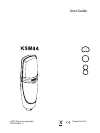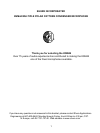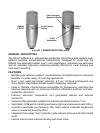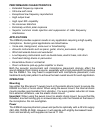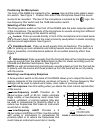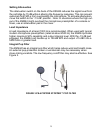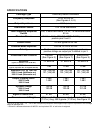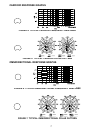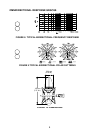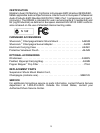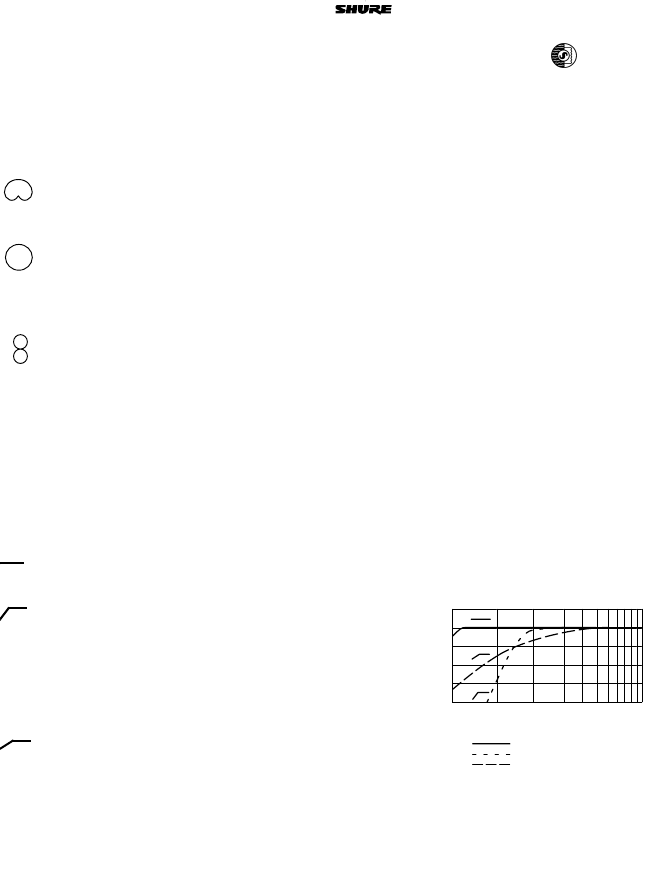
4
Positioning the Microphone
The front of the KSM44 is marked by the logo and the polar-pattern selec-
tion switch. See Figure 1. Position this side of the microphone toward the sound
source to be recorded. The rear of the microphone is marked by the logo, the
low-frequency filter switch and the 15dB attenuation switch.
Selecting a Polar Pattern
The three position switch on the front of the KSM44 sets the polar response pattern
of the microphone. The sensitivity of the microphone to sounds coming from different
angles varies according to this switch's setting.
Cardioid. Picks up sounds directly in front of the microphone and is least sensi-
tive to those in back. Cardioid is the most commonly used pattern in studio recording
and live-sound applications. See Figure 5.
Omnidirectional. Picks up sound equally from all directions. This pattern is
best for picking up room ambience and miking several sources at once, such as a
choir or ensemble. Omnidirectional patterns do not exhibit proximity effect. See
Figure 7.
Bidirectional. Picks up equally from the front and back of the microphone while
rejecting sounds from the sides. Bidirectional is often for stereo recording (such as
mid-side and Blumlein techniques). See Figure 9.
NOTE: As with all bidirectional microphones, sounds picked up from the front will be
in polarity with the source and those picked up from the back will be out of polarity
with the source.
Selecting Low-Frequency Response
A three-position switch on the back of the KSM44 allows you to adjust the low-fre-
quency response of the microphone, as shown in Figure 2. The low-frequency filter
settings can be used to reduce wind noise, room noise or proximity effect.
Flat response. Use this setting when you desire the most natural reproduction
of the source.
Low-frequency cutoff. Provides an 18
dB-per-octave cutoff at 80 Hz. Helps eliminate
stage rumble or low-frequency room noise from
heating, ventilation, or cooling systems. May also
be used to compensate for proximity effect or to
reduce low frequencies that make an instrument
sound dull or muddy.
Low-frequency rolloff.
Provides a 6
dB-per-octave rolloff filter at 115Hz. Use this setting
with vocals or instruments to compensate for
proximity effect or to reduce low frequencies that
could make an instrument sound dull or muddy.
20 100050 100
98765432
+5
0
–10
Hz
dB
Flat Response
Low-Frequency Cutoff
Low-Frequency Rolloff
FIGURE 2. LOW FREQUENCY FILTERS



